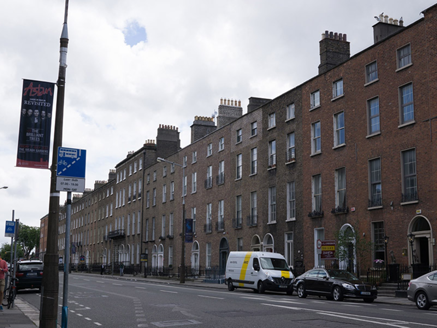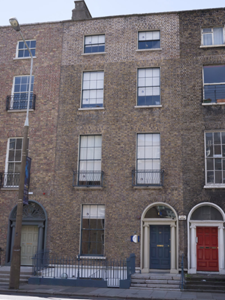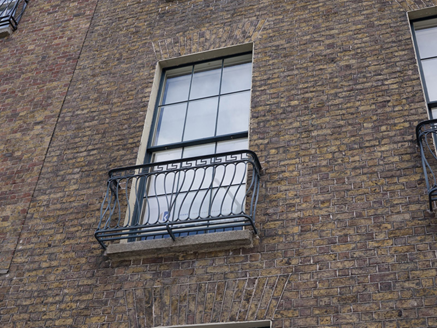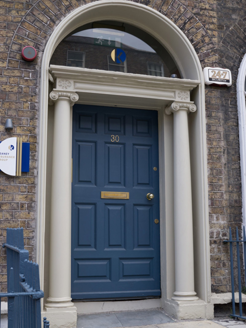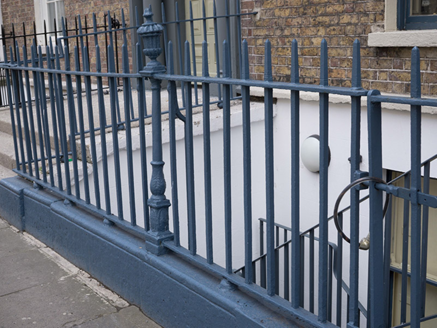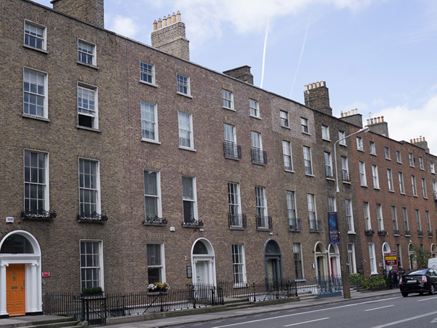Survey Data
Reg No
50110505
Rating
Regional
Categories of Special Interest
Architectural, Artistic
Original Use
House
In Use As
Office
Date
1805 - 1815
Coordinates
316298, 232904
Date Recorded
25/06/2017
Date Updated
--/--/--
Description
Terraced two-bay four-storey former house over basement, built c. 1810, now in use as offices and apartments. M-profile hipped slate roof concealed behind brown brick parapet with granite coping. Brown brick chimneystacks having clay pots. Brown brick, laid in Flemish Bond, to walls, with repointed upper floor and cut granite plinth course over lined-and-ruled rendered walls to basement. Square-headed window openings having granite sills and rendered reveals, with three-over-three pane, six-over-six pane, and one-over-one pane timber sliding sash windows. Square-headed window opening having Wyatt window rear (west) elevation. Decorative wrought-iron balconettes to windows to first floor to front elevation. Some timber panelled shutters visible to interior. Round-headed door opening with moulded render surround. Doorcase comprising Ionic columns and entablature. Plain fanlight and timber panelled door. Wrought-iron boot-scrape. Granite and limestone platform approached by granite steps. Wrought-iron railings, having cast-iron corner posts with urn finials, set on carved granite plinth wall, to front.
Appraisal
No. 30 is a fine example of the brick townhouse characteristic of this area of Dublin. The restrained façade, which is typical of Georgian architecture, is enlivened by the finely detailed doorcase while the diminishing scale of fenestration enhances the perception of verticality in the front elevation. The retention of the Wyatt window to the rear is notable, at one time most houses on this row had such windows but it has become increasingly rare. Leeson Street Lower was an important thoroughfare leading from St. Stephens Green to Donnybrook. The street owes much of its character to townhouses built for Lord Dunboyne, the Duke of Ormonde.
